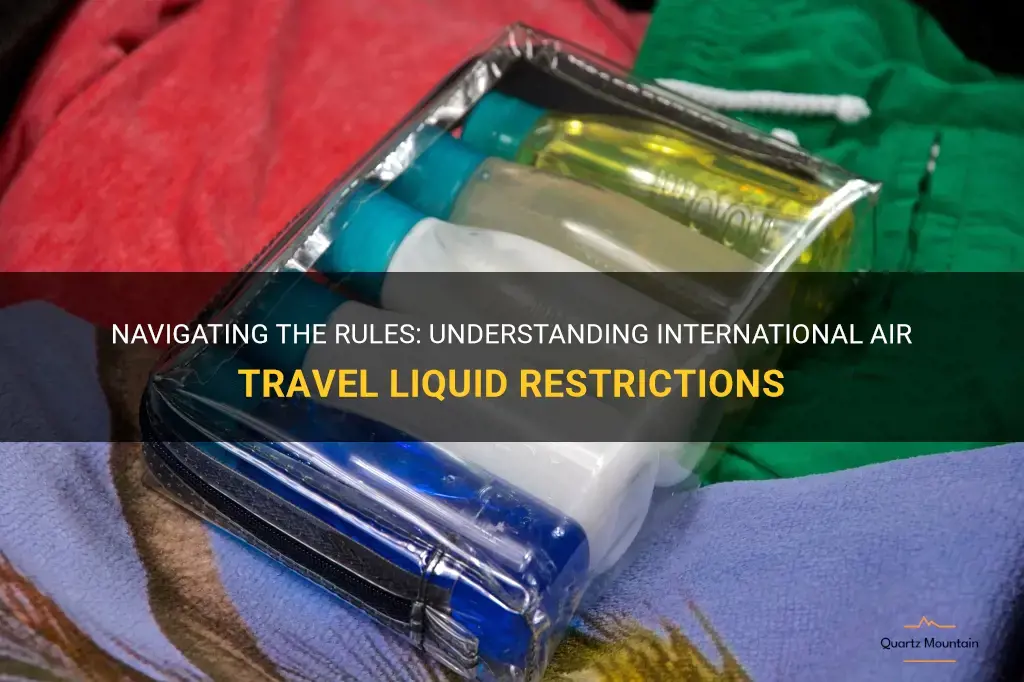
International air travel is a fascinating and exciting experience, offering the opportunity to explore new destinations and immerse ourselves in different cultures. However, with this excitement comes certain limitations and regulations, one of the most notable being restrictions on liquid items. While these restrictions may seem inconvenient at first, they play a crucial role in ensuring the safety and security of both passengers and crew. In this article, we will delve into the reasons behind these liquid restrictions and explore the fascinating world of international air travel.
| Characteristics | Values |
|---|---|
| Liquid limit | 100 milliliters (3.4 oz) |
| Container size | maximum 1 liter (1 quart) |
| Number of items | 1 per passenger |
| Security check | separate transparent bag |
What You'll Learn
- What are the current restrictions on carrying liquids in carry-on baggage for international air travel?
- Why are there restrictions on carrying liquids in hand luggage for international flights?
- What types of liquids are allowed in carry-on baggage for international air travel?
- Are there any exceptions to the liquid restrictions for international air travel?
- How strictly are the liquid restrictions enforced for international flights?

What are the current restrictions on carrying liquids in carry-on baggage for international air travel?
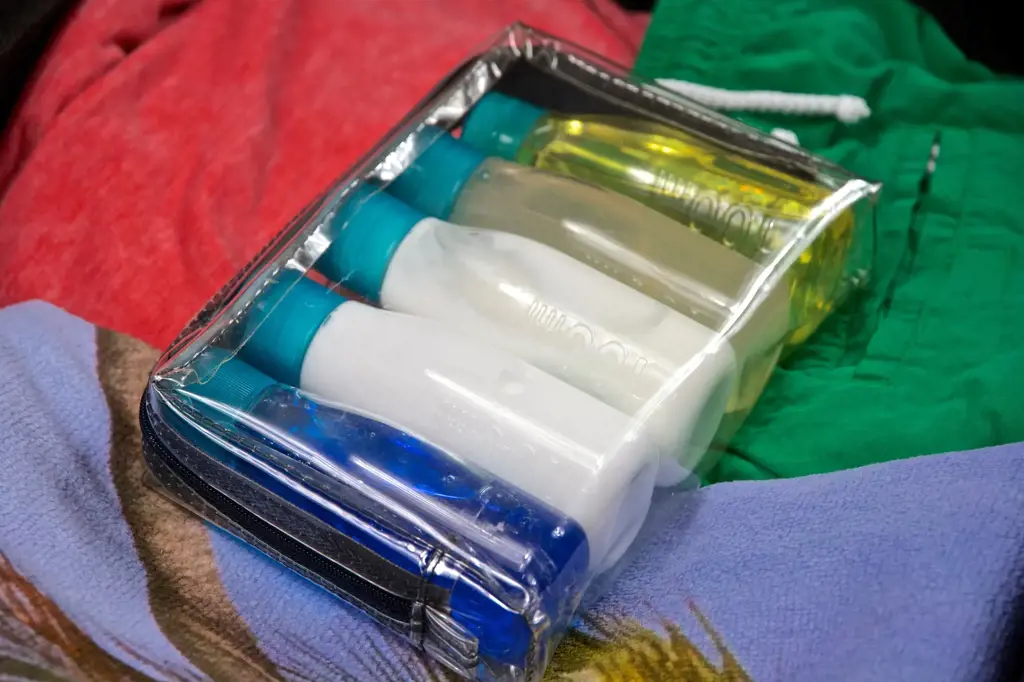
When it comes to international air travel, there are specific restrictions on carrying liquids in carry-on baggage. These restrictions are in place to ensure the safety and security of travelers and to prevent any potentially dangerous items from being brought on board an aircraft.
The current restrictions on carrying liquids in carry-on baggage for international air travel are commonly known as the 3-1-1 rule. This rule dictates that each passenger can carry only a limited amount of liquids, gels, and aerosols in their carry-on luggage.
The "3" refers to the maximum container size allowed for any liquid, gel, or aerosol. Each container must be 3.4 ounces (100 milliliters) or smaller. This means that any container larger than 3.4 ounces, even if it is only partially filled, is not permitted in carry-on baggage.
The "1" refers to the number of quart-sized clear plastic bags that are allowed for carrying liquids, gels, and aerosols. Each passenger is allowed only one quart-sized bag, which must be resealable and transparent. The bag should be able to comfortably fit all the containers of liquids, gels, and aerosols that the passenger wishes to carry on board.
The "1" also indicates that each passenger is allowed only one bag for their liquids, gels, and aerosols. Any additional bags will not be permitted in carry-on baggage.
It is important to note that the 3-1-1 rule applies to all liquids, gels, and aerosols, including but not limited to toiletries, creams, lotions, perfumes, and beverages. This rule also applies to any duty-free items purchased at the airport, so travelers should be mindful of this when making purchases.
There are some exceptions to the 3-1-1 rule. Prescription medications and certain items for medical purposes are allowed in carry-on baggage, even if they exceed the 3.4-ounce limit. However, these items may be subject to additional screening and should be declared to the security officers at the checkpoint.
When going through the security checkpoint, passengers are required to remove their quart-sized bag containing liquids, gels, and aerosols from their carry-on luggage and place it in a separate bin for screening. This allows the security officers to easily inspect the bag and its contents.
It is also worth noting that these restrictions apply to carry-on baggage only. Passengers are generally allowed to pack larger quantities of liquids, gels, and aerosols in their checked luggage. However, it is still important to check with the airline or the specific airport for any additional restrictions that may be in place.
In conclusion, the current restrictions on carrying liquids in carry-on baggage for international air travel are based on the 3-1-1 rule. Each passenger is allowed a maximum of 3.4-ounce containers of liquids, gels, and aerosols, which must be placed in a quart-sized clear plastic bag. It is important for travelers to be aware of these restrictions and to pack their liquids accordingly to ensure a smooth and hassle-free journey.
Understanding Bavaria Travel Restrictions: What You Need to Know
You may want to see also

Why are there restrictions on carrying liquids in hand luggage for international flights?
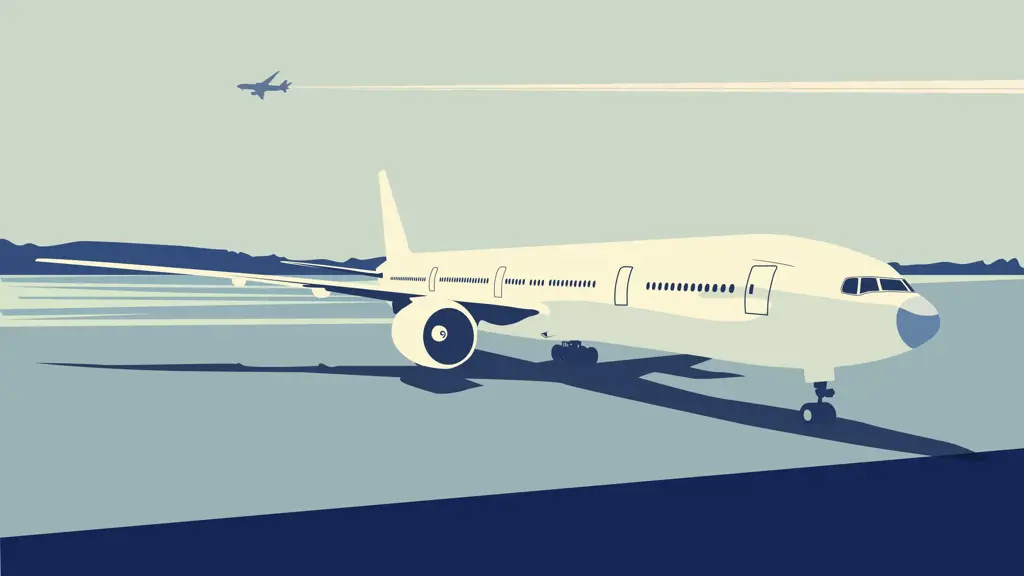
If you have ever traveled internationally by air, you may have noticed that there are strict restrictions on carrying liquids in your hand luggage. These restrictions can be quite frustrating, especially if you are used to carrying essential items like toiletries or medications with you on the plane. However, there are valid reasons behind these restrictions that are aimed at ensuring the safety and security of air travel.
The restrictions on carrying liquids in hand luggage were introduced after a foiled terrorist plot in 2006. The plot involved terrorists planning to smuggle liquid explosives on board several international flights departing from the United Kingdom. The plan was to mix liquids that would appear harmless separately but could become a potent explosive when combined on the plane. This discovery prompted airport authorities around the world to introduce measures to prevent such attacks from happening in the future.
To address the threat of liquid explosives, airports implemented a policy known as the "3-1-1 rule." This rule allows passengers to carry liquids in containers that are 3.4 ounces (100 milliliters) or less, and all containers must fit into a single, clear, quart-sized zip-top bag. Each passenger is limited to one such bag of liquids. This rule applies to all international flights departing from or transiting through airports in the United States, Europe, and many other countries.
The restriction on liquids is based on the understanding that small quantities of liquid explosives can still cause significant damage to an aircraft. By limiting the amount of liquid that passengers can carry on board, the risk of an explosive device being smuggled onto a plane is reduced. Additionally, the restriction allows airport security personnel to more effectively screen and identify suspicious items.
It is important to note that while there are restrictions on carrying liquids in hand luggage, there are no restrictions on carrying them in checked baggage. The screening process for checked baggage involves more thorough inspection and technologies that can detect the presence of any dangerous substances. By allowing liquids to be checked, the risk of explosive devices being smuggled on board is further minimized.
It is also worth mentioning that the restrictions on carrying liquids in hand luggage do not apply to certain items such as medications, baby formula, and breast milk. These items are allowed in larger quantities but may be subject to additional screening or inspection by airport security.
In conclusion, the restrictions on carrying liquids in hand luggage for international flights are in place to ensure the safety and security of air travel. They are a direct response to the threat of liquid explosives that emerged from a foiled terrorist plot in 2006. While they may be inconvenient for passengers, these restrictions play a crucial role in minimizing the risk of attacks on aircraft. It is important for travelers to familiarize themselves with these rules and pack accordingly to avoid any issues at airport security checkpoints.
Exploring the Travel Restrictions in St. Louis: What You Need to Know
You may want to see also

What types of liquids are allowed in carry-on baggage for international air travel?
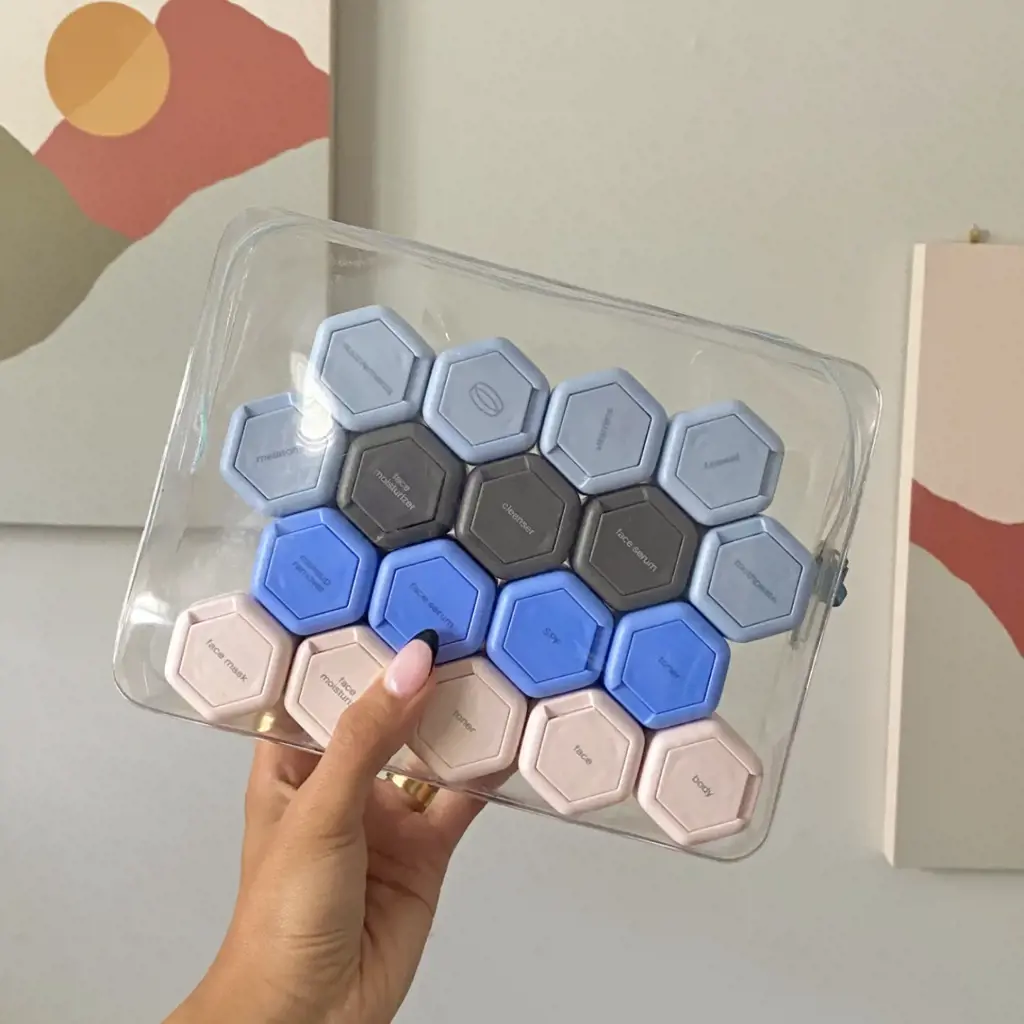
When traveling internationally by air, it is important to familiarize yourself with the rules and regulations regarding carry-on baggage. One particular aspect that many travelers often have questions about is the types of liquids that are allowed in carry-on baggage.
The Transportation Security Administration (TSA) has strict guidelines in place to ensure the safety of all passengers and crew on board the aircraft. These guidelines apply to all liquids, gels, and aerosols that are brought onto the plane.
In general, all liquids brought onto an international flight must be in containers that are 3.4 ounces (100 milliliters) or less and must be placed in a clear, quart-sized, zip-top bag. Each passenger is allowed only one such bag, and it must be easily accessible for inspection at the security checkpoint.
It is important to note that these rules apply to all types of liquids, including water, shampoo, lotion, perfume, and even baby formula. However, there are a few exceptions to these rules.
Firstly, if you have a medical condition that requires you to carry larger quantities of liquid medication or other specific medical items, you may be exempt from the restrictions. However, it is always advised to inform the airline and security personnel in advance to avoid any complications during the security screening process.
Secondly, duty-free liquids purchased after the security checkpoint are allowed in carry-on baggage, regardless of size. These liquids must be sealed in a tamper-evident bag, and you must have a receipt showing that the items were purchased within the last 48 hours.
It is also important to keep in mind that any larger quantities of liquid, whether it be in carry-on or checked baggage, may be subject to additional screening or may not be allowed at all. It is suggested to check with the airline or the TSA website for the most up-to-date information before your trip.
In conclusion, when it comes to liquids in carry-on baggage for international air travel, the general rule is that liquids must be in containers of 3.4 ounces or less, placed in a quart-sized, zip-top bag. However, there are exceptions for medical items and duty-free liquids purchased after the security checkpoint. It is always best to check with the airline or TSA for any specific guidelines or restrictions before your trip to ensure a smooth and hassle-free travel experience.
Understanding the Current India to USA Travel Restrictions
You may want to see also

Are there any exceptions to the liquid restrictions for international air travel?
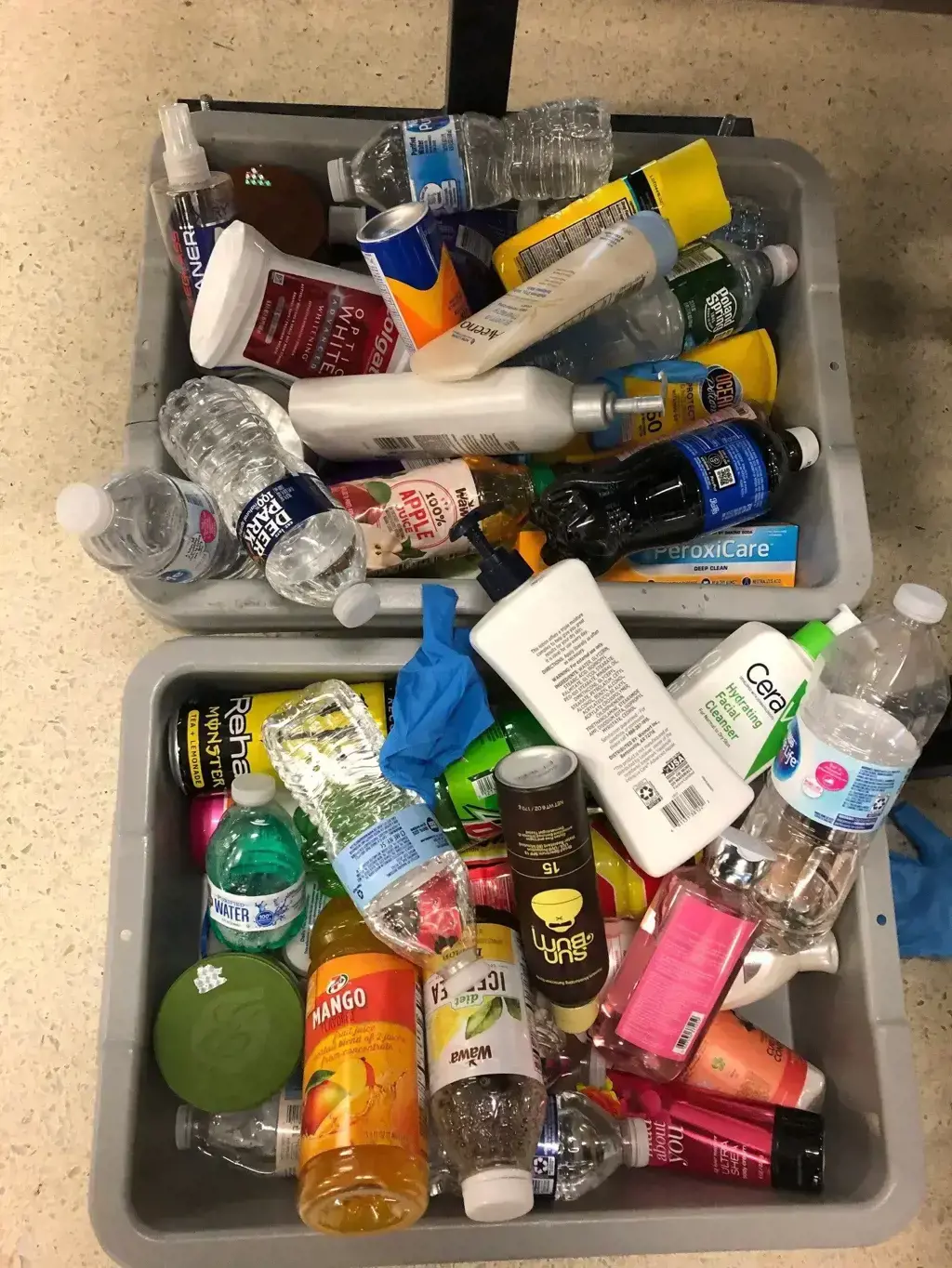
When you're traveling internationally by air, you'll often come across liquid restrictions that limit the amount of liquid you can carry on board the plane. These restrictions are put in place for security reasons, and most passengers are subject to them. However, there are a few exceptions to these restrictions.
One of the main exceptions to the liquid restrictions is for medications and medical supplies. Passengers are allowed to carry necessary medications and medical supplies in their carry-on bags, even if they exceed the allowed liquid limit. This exception applies to both prescription and over-the-counter medications.
To take advantage of this exception, it is recommended to have the medications in their original packaging, and it may be helpful to carry a doctor's note or prescription to verify the need for the medication. It's also advisable to separate the medications from other liquids, such as toiletries, in your carry-on bag, to make the security screening process smoother.
Another exception to the liquid restrictions is for baby food and formula. Passengers traveling with infants or young children are allowed to carry a sufficient amount of baby food and formula to meet their needs during the flight. The liquids should be presented for inspection during the security screening process, but they are not subject to the usual size restrictions.
In addition to medications and baby supplies, there are a few other exceptions with specific rules. Passengers are usually allowed to carry duty-free liquids purchased at an airport or on board an aircraft, as long as they are in a secure, tamper-evident bag and accompanied by the receipt. It's important to note that these liquids may still be subject to additional screening.
If you have a genuine need for carrying larger quantities of liquids, such as for medical conditions or disabilities, it's recommended to contact the airline in advance. They may be able to provide additional guidance or make special arrangements to accommodate your needs.
It's important to remember that these exceptions are subject to the rules and regulations of the country you are traveling to and from. It's always a good idea to check with the airline or consult the appropriate government agency for the most up-to-date information on liquid restrictions before you travel.
In conclusion, while there are strict liquid restrictions for international air travel, there are a few exceptions to these rules. Passengers are generally allowed to carry necessary medications and medical supplies, as well as baby food and formula, in their carry-on bags. Duty-free liquids purchased at the airport or on board are also allowed, but may be subject to additional screening. It's always advisable to check the specific rules and regulations of the country you are traveling to and from before you travel.
Navigating California's Travel Restriction Updates: What You Need to Know
You may want to see also

How strictly are the liquid restrictions enforced for international flights?
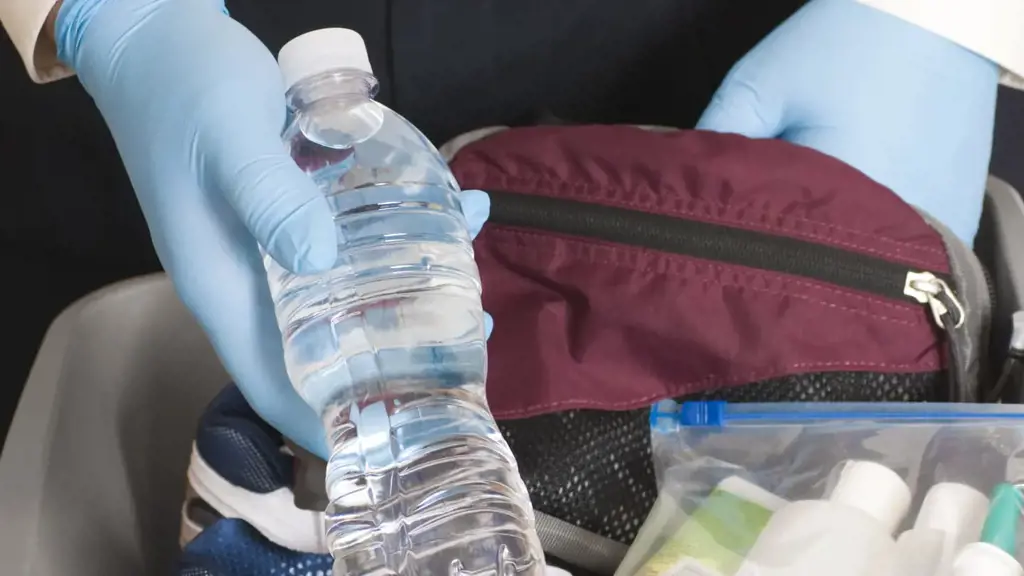
When traveling internationally, it is important to be aware of the liquid restrictions that are enforced by airlines and airport security. These restrictions are in place for safety reasons and are meant to prevent potentially dangerous substances from being brought on board an aircraft.
The restrictions on liquids in carry-on luggage are commonly referred to as the "3-1-1" rule. This rule states that passengers are allowed to bring containers of liquid in their carry-on luggage, as long as each container is 3.4 ounces (100 milliliters) or less, all of the containers fit in a single quart-sized clear plastic bag, and each passenger is limited to one bag.
These restrictions are generally strictly enforced by airport security. When going through the security checkpoint, passengers are required to place their quart-sized bag containing liquids in a bin to be screened separately. If any liquids are found that do not meet the size or quantity restrictions, they may be confiscated.
Additionally, airport security personnel are trained to look for any signs of tampering or suspicious liquids. They may open containers, perform additional tests, or ask passengers to drink from a container to verify its contents.
It is important to note that these restrictions only apply to liquids in carry-on luggage. Passengers are generally allowed to bring larger amounts of liquids in their checked luggage, as long as they are not considered dangerous or prohibited items.
While the liquid restrictions may seem strict, they are in place to ensure the safety of all passengers on board an aircraft. It is important for travelers to familiarize themselves with these restrictions and to pack liquids accordingly to avoid any issues at the airport security checkpoint.
Understanding British Rail Staff Travel Restrictions: What You Need to Know
You may want to see also
Frequently asked questions
The current restrictions on carrying liquids in carry-on baggage for international air travel are that passengers are only allowed to carry liquids in containers that are 3.4 ounces (100 milliliters) or less, and all containers must fit into a single, clear, resealable quart-sized bag. Each passenger is only allowed to have one bag of liquids in their carry-on baggage.
The restrictions on carrying liquids in carry-on baggage for international air travel were put in place for security reasons. In 2006, there was a plot to carry out a liquid explosive attack on transatlantic flights, so the restrictions were introduced to mitigate the risk of such attacks.
There are some exceptions to the liquid restrictions for international air travel. Passengers with disabilities or medical conditions are allowed to carry necessary liquids, such as medications or baby formula, in larger quantities than the 3.4 ounce limit. However, these passengers may be required to provide documentation to support their need for these liquids.
Passengers are generally allowed to bring duty-free liquids on board for international air travel. These liquids must be placed in a secure, tamper-evident bag provided by the airport or retailer, and passengers may be required to show proof of purchase when going through security. However, it's important to note that some countries may have additional restrictions on duty-free liquids, so it's always best to check with the relevant authorities or airline before traveling.
If a passenger accidentally brings a larger container of liquid in their carry-on baggage for international air travel, it will be confiscated by security at the checkpoint. In some cases, passengers may be given the option to check the item instead of having it confiscated. It's always important to double-check the size of liquid containers before packing them in your carry-on baggage to avoid any issues at the security checkpoint.







